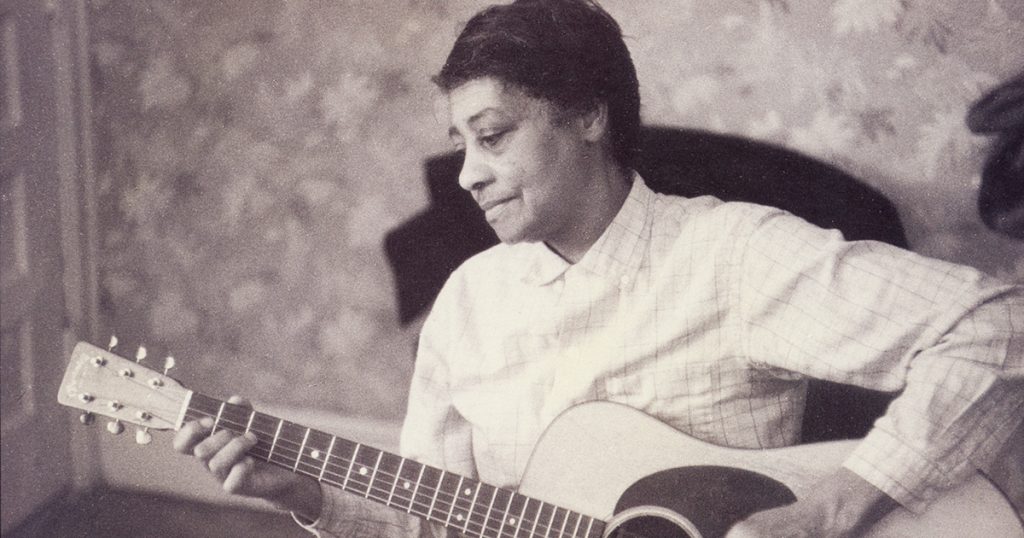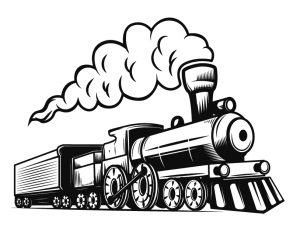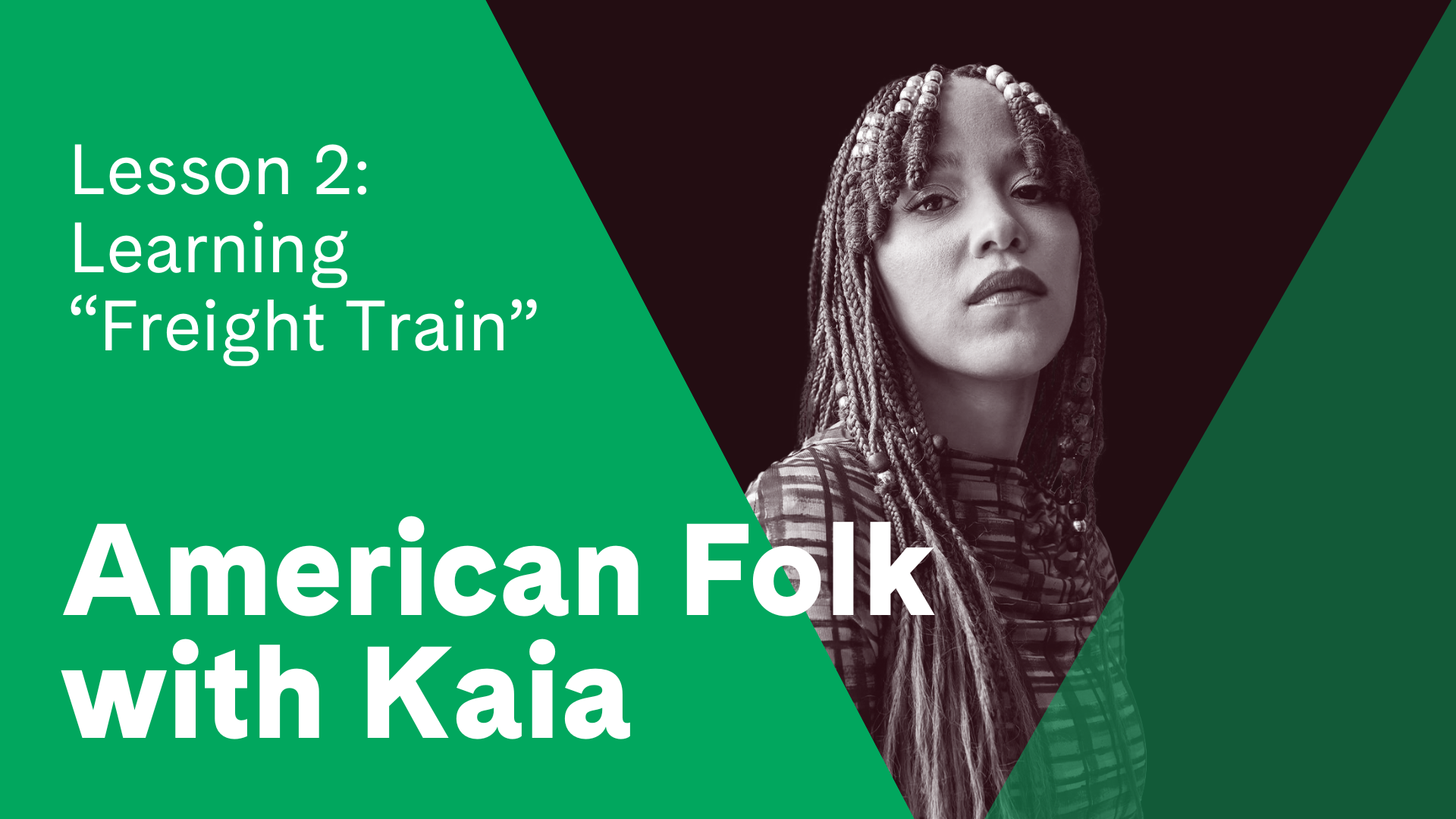Aim: How can we learn about the folk singer Elizabeth Cotten through the song “Freight Train”?
Summary: Students explore melody and banjo through the folk song “Freight Train.”
Materials: Musical Explorers online audio
Standards: GA: ESGMK-2.PR.1 , ESGMK-2.RE.1,ESGMK-2.RE.2, ESGMK-2.CN.1, ESGMK-2.CN.2, ESGMK-2.RE.3 SC: GM.PR.NL-AH.3, GM.RE.NL-AH.6, GM.RE.NL-AH.7, GM.CN.NL-AH.8, GM.CN.NL-AH.9
Vocabulary: banjo, clawhammer technique, melody
Learn the Melody of “Freight Train”
- Listen to Kaia sing “Freight Train,” Track 1.2.
- Learn the first verse of the song.
- Each verse of the song has the same melody. A melody is the tune of the song, the part that you can hum along to.
Track 1.2 – “Freight Train” Song

“Freight Train”
Freight train, freight train, run so fast
Freight train, freight train, run so fast
Please don’t tell what train I’m on
They won’t know what route I’m going
When I’m dead and in my grave
No more good times here I crave
Place some stones at my head and feet
Tell them all I’ve gone to sleep
When I die, oh bury me deep
Down at the end of old Chestnut Street
Place the stones at my head and feet
And tell them all I’ve gone to sleep
When I die, oh bury me deep
Down at the end of old Chestnut Street
So I can hear old Number Nine
As she goes rolling by
Freight train, freight train, run so fast
Freight train, freight train, run so fast
Please don’t tell what train I’m on
They won’t know where I’m going
Learn About Elizabeth Cotten

Elizabeth Cotten was born in 1895 in Chapel Hill, North Carolina. As a child, she would borrow her brother’s banjo and guitar while he was working. Most stringed instruments (such as guitars) are made for people who are right-handed–the left hand is used to change the pitch of the strings, while the right hand strums or picks. However, since Elizabeth Cotten was left-handed, she taught herself how to play both the banjo and guitar upside down, with the higher strings on top and the lower strings on the bottom.
She dropped out of school at age 9 to work in the household of a white family. Eventually she saved enough money to buy her first guitar for $3.75.
When she was a girl, she and her brother would chop wood and play by the railroad tracks near their home. She and her brother would sing made up songs while working and playing. She wrote “Freight Train” when she was twelve years old, inspired by the trains on the tracks. She recorded the song when she was much older (age 62), when her own children had grown up. She started performing all over the country at folk music festivals, and won a Grammy Award in 1985 at the age of 90.
Compare Elizabeth and Kaia
- Using the resources available at Smithsonian Folkways, show your students a video of Elizabeth Cotten singing “Freight Train.” Notice how she picks the higher strings with her thumb.
- Show your students the video of Kaia singing “Freight Train.”
- How does Kaia’s version of “Freight Train” sound the same as Elizabeth Cotten’s? How does it sound different?
Explore the Banjo in American Folk Music
- While different regions in the United States have their own folk music traditions, Kaia often sings a style of folk music that comes from the region known as Appalachia.
- This cultural region includes both North Carolina, where Elizabeth Cotten is from, and West Virginia, where Kaia went to college and studied folk songs.
- Use SG 11 to show a map of the Appalachian Mountain region.
- Elizabeth Cotten played guitar. Another instrument used in American folk music is the banjo.
- The banjo, originally a fretless instrument made from a gourd, came from West Africa, when enslaved Africans were brought to North America through the Caribbean.
- The banjo used in old-time/American folk music is typically a 5-string model with an open back.
- Using SG 12, each student can color/design their own banjo just like Kaia’s.
- Kaia plays the banjo in the clawhammer style, which is often the technique used in old-time/American folk music. Watch Kaia explain and perform on her banjo with the clawhammer technique in the video below.
Trains figure prominently in American music of the late 19th and early 20th centuries. Trains were an exciting part of life in many towns–before most people had cars, they could ride a train to different cities and different states. Trains coming into town brought new and different people, sometimes from far away.
Read more about trains with these children’s books:

- Freight Train by Donald Crews
- Shortcut by Donald Crews
- Locomotive by Brian Floca
- I Dream of Trains by Angela Johnson
- Train Song by Diane Siebert
Musical Word Wall
Add banjo, clawhammer technique, and melody to the Musical Word Wall.
Audio Tracks
Track 1.2 – “Freight Train” Song
← Previous: Unit 1 – Lesson 1: Learning “John Henry”
Next: Unit 2 – Country with Anders →

